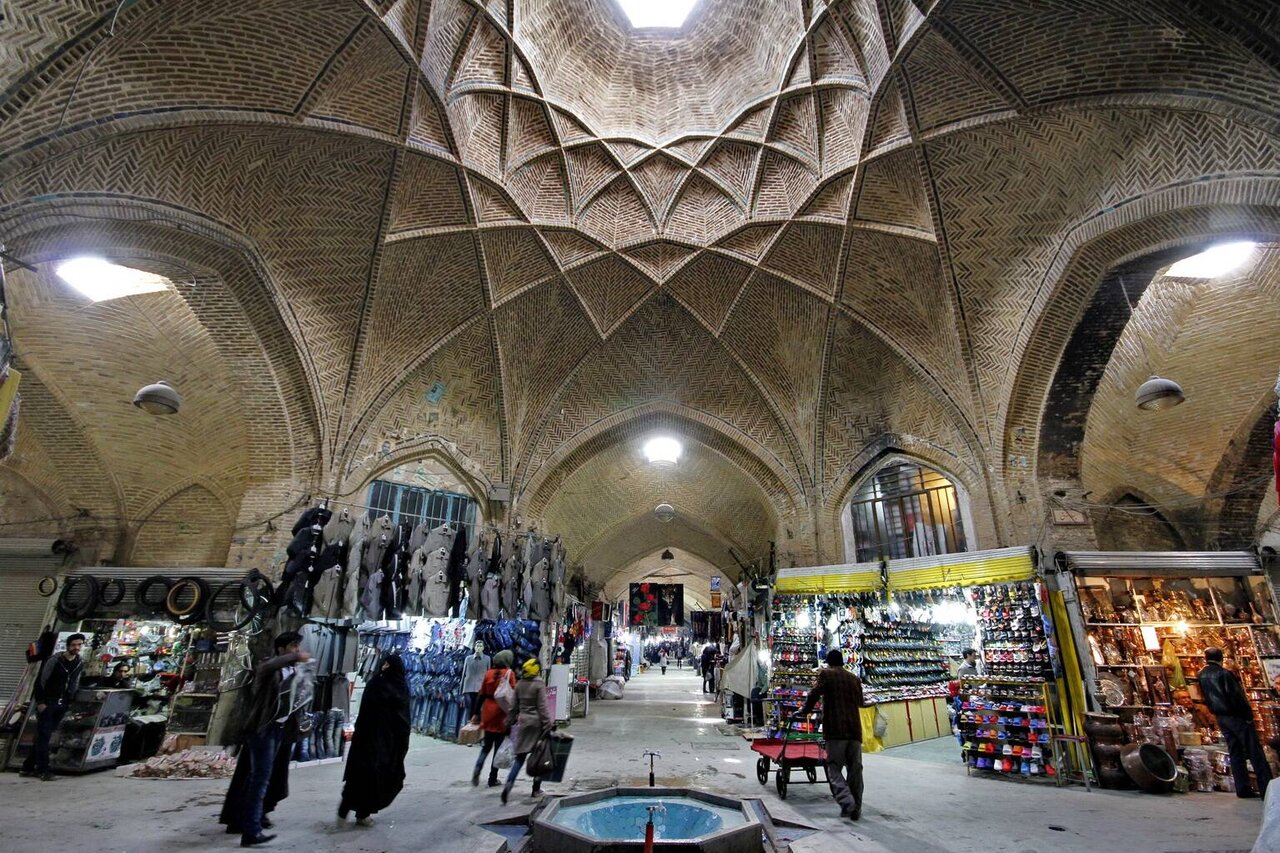Discover local charm at Arak’s Nowzari complex

TEHRAN - Welcome to the bustling bazaar of Arak, where you can immerse yourself in the vibrant culture and rich history of traditional marketplaces in the heart of Iran.
Among its subdivisions that sell everything from spices to souvenirs, the Nowzari complex stands out as a remarkable example of commercial heritage.
The complex, which consists of two timchehs (domed halls with bazaar shops) and a caravanserai, attracts tourists and locals alike, who come to experience the unique atmosphere and shop for authentic Iranian merchandise.
As you step inside the complex, you'll be struck by the intricate architecture of the timchehs. The domed ceilings are adorned with beautifully crafted patterns, and the walls are lined with shops selling everything from spices and fabrics to jewelry and handicrafts.
The timchehs offer a glimpse into the evolution of Iranian commerce, showcasing how old markets were designed to attract and accommodate customers.
The caravanserai, located adjacent to the timchehs, is a testament to the importance of trade in Arak's history.
According to Archnet, the complex sits behind the shops on the west side of the main bazaar street and is pierced by the fourth and fifth side lanes that intersect the main street. These side lanes are covered with vaults, lined with shops, and dead end after running for some thirty or so meters, blending seamlessly into the complex.
The center of the complex is the caravanserai. An entrance off the main bazaar street leads through a long corridor onto the southeastern side of the caravanserai's open courtyard. This courtyard is paved with large stone slabs and features an octagonal pool at the center. Surrounding the court is a two-story arcade onto which chambers open on the second floor and shops open on the first.
A corridor on the northwest side of the caravanserai's courtyard leads onto the central domed hall of the complex's larger timcheh. The timcheh's central hall takes the form of a rectangle with angled corners oriented southwest-northeast, parallel to the caravanserai court. Covering this octagon are nine vaulted bays, the central three rising higher than the three on its north and south sides.
The southwestern and northeastern ends of this timcheh give onto corridors that connect to the ends of the two side lanes that intersect the main bazaar street. On the northeastern side, a smaller timcheh, also octagonal and two stories high, is accessible through a corridor across the side lane. On the southwestern side, the end of the side lane gives onto a small, open courtyard.
A timcheh (vaulted space with bazaar shops for selling merchandise) offers a glimpse into the evolution of Iranian commerce, showcasing how old markets were designed to attract and accommodate customers.Bazaars in the ancient Islamic world were vividly described in the folktales of “The Thousand and One Nights.” They are typically roofed for protection against the hot desert sun, either with a single roof, with individual vaulted cupolas or domes, or with awnings.
In Iranian culture, bazaars have made great contributions to commercial activities. Meanwhile, their extended activities can be traced to social, cultural, political, and religious roles.
Most mazes and passages offer certain commodities such as carpets, metalwork, toys, clothing, jewelry, kitchen appliances, traditional spices, herbal remedies, and natural perfumes. One can also bump into colorful grocery stores, bookbinders, blacksmiths, tinsmiths, coppersmiths, tobacconists, tailors, flag sellers, broadcloth sellers, carpenters, shoemakers, and knife-makers.
In addition, there are divided carpet sections in a bazaar that enable visitors to browse hand-woven Persian carpets and rugs. From another point of view, bazaars are also synonyms for foods, with their unmissable colorful stalls of vegetables, herbs, and spices. Yet, most of these ingredients might be mysterious to a foreign eye.
Browsing through a traditional bazaar may provide new experiences and fresh points of view on ancient Iran. Such excursions can be made either in person or by “off-the-beaten-track” tours. Not only it’s an opportunity to discover dozens of unique local ingredients, but it’s also a chance to taste street foods and delicacies, in some traditional bakery known only by locals and shopkeepers.
While roaming over a vaulted bazaar, people-watching and even mingling with them is one of the best ways to take the pulse of the ancient land.
AFM
